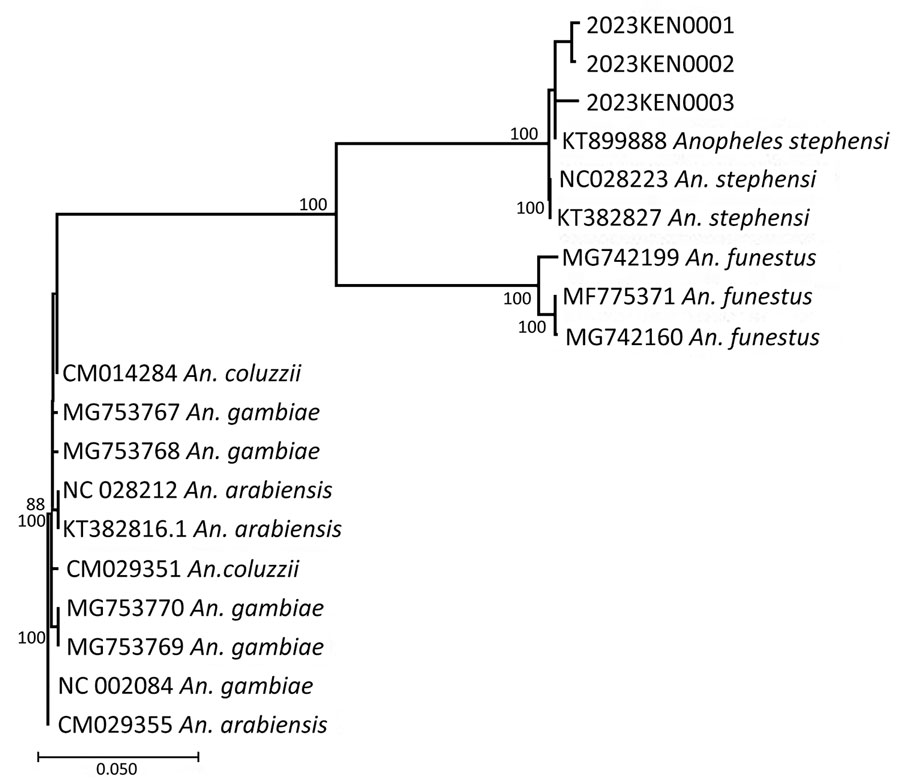Volume 29, Number 12—December 2023
Research
Detection of Anopheles stephensi Mosquitoes by Molecular Surveillance, Kenya
Figure 4

Figure 4. Phylogenetic tree representing the relationship of Anopheles stephensi mosquito isolates from Kenya (2023KEN0001, 2023KEN0002, and 2023KEN0003) and reference Anopheles spp. isolates using the cytochrome c oxidase subunit 1 region. GenBank accession numbers are provided for reference sequences; accession numbers for Kenya sequences are provided in [[ANCHOR###T3###Table 3###Anchor]]. Scale bar indicates 5% nucleotide sequence divergence. Values on the branches represent the percentage of 1,000 bootstrap replicates; bootstrap values >70% are shown in the tree.
Page created: October 11, 2023
Page updated: November 18, 2023
Page reviewed: November 18, 2023
The conclusions, findings, and opinions expressed by authors contributing to this journal do not necessarily reflect the official position of the U.S. Department of Health and Human Services, the Public Health Service, the Centers for Disease Control and Prevention, or the authors' affiliated institutions. Use of trade names is for identification only and does not imply endorsement by any of the groups named above.